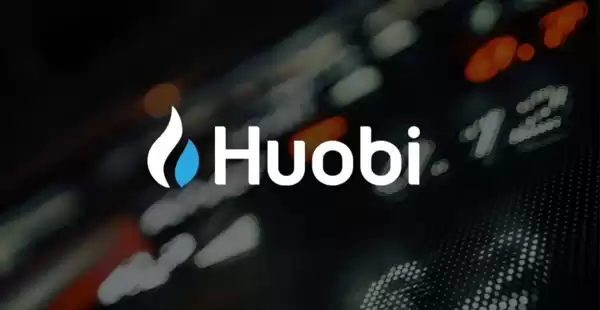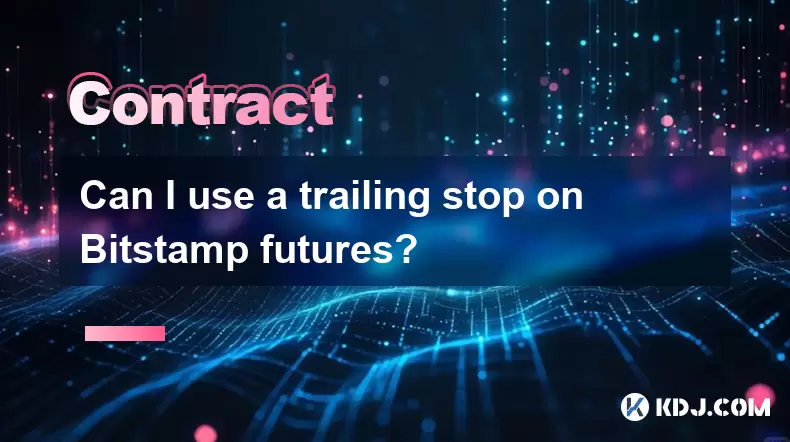-
 Bitcoin
Bitcoin $119800
1.38% -
 Ethereum
Ethereum $3873
3.25% -
 XRP
XRP $3.247
1.85% -
 Tether USDt
Tether USDt $1.001
0.02% -
 BNB
BNB $840.4
5.94% -
 Solana
Solana $190.0
2.55% -
 USDC
USDC $1.000
0.03% -
 Dogecoin
Dogecoin $0.2433
2.69% -
 TRON
TRON $0.3197
-0.05% -
 Cardano
Cardano $0.8367
1.39% -
 Sui
Sui $4.327
3.11% -
 Hyperliquid
Hyperliquid $44.00
0.31% -
 Stellar
Stellar $0.4461
1.76% -
 Chainlink
Chainlink $19.25
4.61% -
 Hedera
Hedera $0.2941
3.90% -
 Bitcoin Cash
Bitcoin Cash $598.4
6.89% -
 Avalanche
Avalanche $26.19
4.67% -
 Litecoin
Litecoin $115.1
0.50% -
 Shiba Inu
Shiba Inu $0.00001427
1.55% -
 Toncoin
Toncoin $3.379
2.01% -
 UNUS SED LEO
UNUS SED LEO $8.966
-0.16% -
 Ethena USDe
Ethena USDe $1.001
0.02% -
 Uniswap
Uniswap $11.04
4.16% -
 Polkadot
Polkadot $4.239
2.00% -
 Monero
Monero $324.6
0.36% -
 Bitget Token
Bitget Token $4.672
2.46% -
 Pepe
Pepe $0.00001294
2.69% -
 Dai
Dai $0.0000
0.01% -
 Cronos
Cronos $0.1443
2.71% -
 Aave
Aave $302.9
1.98%
How to close Huobi contract
Traders can choose from various closing techniques for Huobi contracts, including flat closing for simplicity, offset closing for precise execution, market closing for instant results, and more advanced methods like limit and stop-limit closing for controlled exits.
Nov 12, 2024 at 10:21 pm

How to Close Huobi Contract
Step 1: Overview
The Huobi contract market is a popular platform for traders to speculate on the future price of cryptocurrencies using leverage. Understanding how to close your Huobi contract is crucial for managing risk and maximizing profits. There are several different methods to close a Huobi contract, each with its own advantages and disadvantages. This guide provides a comprehensive overview of the various closing techniques available and their respective implications.
- Flat Closing: This involves selling/buying an equal quantity of the contract to exit your position, reversing the initial trade. It's the most straightforward method and has no associated fees.
- Offset Closing: This method involves opening an opposite position, effectively canceling out the original contract. For instance, if you hold a long contract, you would open a short contract of the same size.
- Market Closing: This entails closing your contract at the prevailing market price. It offers instant execution but may result in slippage during high volatility.
- Limit Closing: This method allows you to specify the desired closing price and place a limit order accordingly. It ensures a predefined price, but execution is dependent on market conditions.
- Stop-Limit Closing: This setup combines the benefits of market and limit orders. You specify a trigger price (stop price) to activate a limit order execution. It safeguards against adverse market movements.
Step 2: Flat Closing
Flat closing is the most basic and widely used method. It involves selling/buying an identical quantity of the same contract to exit your current position. This action essentially reverses the original trade.
Advantages:
- Simplicity: Flat closing is extremely easy to execute, requiring only one trading action.
- Speed: The process is typically instant, as you're directly closing your position with a counterparty.
- Cost-effectiveness: Flat closing incurs no additional fees besides the standard trading commission.
Disadvantages:
- Limited Precision: You have no control over your exact closing price, which can be a drawback in volatile markets.
- Potential Slippage: During periods of high volatility, market conditions can rapidly change, leading to slippage between your intended closing price and executed price.
Step 3: Offset Closing
Offset closing is an alternative approach that involves opening a new contract with the opposite position. This method effectively cancels out the original contract, resulting in a net position of zero.
Advantages:
- Precise Execution: Offset closing allows you to precisely exit your position at your specified price, eliminating any potential for slippage.
- Flexibility: You can modify or cancel your offsetting order before execution, providing flexibility in adjusting your trading strategy.
Disadvantages:
- Complexity: Offset closing is a more complex process than flat closing, requiring separate opening and closing orders.
- Higher Fees: Executing two trades instead of one incurs double the trading fees, which may impact profitability.
- Partial Closing: With offset closing, you can't partially close your position; you must either close the entire amount or not at all.
Step 4: Market Closing
Market closing involves closing your contract at the current prevailing market price. This method offers the fastest execution since you're essentially trading directly with the market depth.
Advantages:
- Instant Execution: Market closing provides immediate execution, ensuring you lock in your position at the current market price.
- No Precision Issues: You're not dealing with the precision limitations of limit orders, which removes the risk of slippage.
Disadvantages:
- Slippage: During market fluctuations, the executed closing price may deviate from your intended price, especially with large orders.
- Limited Control: With market closing, you relinquish control over the specific execution price, which may not be ideal in certain market conditions.
Step 5: Limit Closing
Limit closing empowers you to specify a target closing price and place a limit order accordingly. This technique ensures that your contract is closed only if the market price reaches your desired level.
Advantages:
- Precise Execution: You have complete control over your closing price, minimizing the risk of unfavorable market movements.
- Flexibility: Limit orders can be modified or canceled before execution, allowing you to fine-tune your trading strategy.
Disadvantages:
- Conditional Execution: Limit orders may not always be executed if the market price fails to reach the specified target level.
- Potential Slippage: If the market moves rapidly beyond your limit price, you may experience slippage during execution.
Step 6: Stop-Limit Closing
Stop-limit closing combines the features of market and limit orders. You predefine a trigger price (stop price) to activate a limit order execution. This setup acts as a safety net, safeguarding against adverse market movements.
Advantages:
- Automatic Protection: The stop-loss element automatically triggers a limit order to close your position if the market price falls to a predetermined threshold.
- Controllable Execution: Once triggered, the limit order provides precise control over the closing price, safeguarding against excessive losses.
Disadvantages:
- Complexity: Stop-limit closing involves a more complex setup and understanding than the other methods.
- Potential Impact: If the market rapidly gaps through your stop price, the limit order may not get executed in time, resulting in unfavorable losses.
Disclaimer:info@kdj.com
The information provided is not trading advice. kdj.com does not assume any responsibility for any investments made based on the information provided in this article. Cryptocurrencies are highly volatile and it is highly recommended that you invest with caution after thorough research!
If you believe that the content used on this website infringes your copyright, please contact us immediately (info@kdj.com) and we will delete it promptly.
- US President, EU Trade, Crypto Spike: What's the Deal?
- 2025-07-28 18:30:12
- Adrian Newman's Endorsement: Ethereum Still King for NFT Collections?
- 2025-07-28 18:30:12
- Crypto's Next Big Meme: Is MAGACOIN Finance the New DOGE or SHIB?
- 2025-07-28 17:15:12
- Altcoins, Cryptos, and 250x Potential: Catching the Next Wave
- 2025-07-28 17:15:12
- BlackRock Veteran Joins SharpLink as Ethereum Treasury Swells: A New Era?
- 2025-07-28 17:50:12
- Bitcoin Laundering, Blockchain Forensics, and Crypto Fraud: A Deep Dive into the Dark Side of Digital Assets
- 2025-07-28 17:50:12
Related knowledge

Why is my Bitstamp futures position being liquidated?
Jul 23,2025 at 11:08am
Understanding Futures Liquidation on BitstampFutures trading on Bitstamp involves borrowing funds to open leveraged positions, which amplifies both po...

Does Bitstamp offer inverse contracts?
Jul 23,2025 at 01:28pm
Understanding Inverse Contracts in Cryptocurrency TradingIn the realm of cryptocurrency derivatives, inverse contracts are a specific type of futures ...

What is the difference between futures and perpetuals on Bitstamp?
Jul 27,2025 at 05:08am
Understanding Futures Contracts on BitstampFutures contracts on Bitstamp are financial derivatives that allow traders to speculate on the future price...

How to find your Bitstamp futures trade history?
Jul 23,2025 at 08:07am
Understanding Bitstamp and Futures Trading AvailabilityAs of the current state of Bitstamp’s service offerings, it is critical to clarify that Bitstam...

Can I use a trailing stop on Bitstamp futures?
Jul 23,2025 at 01:42pm
Understanding Trailing Stops in Cryptocurrency TradingA trailing stop is a dynamic type of stop-loss order that adjusts automatically as the price of ...

Can I use a trailing stop on Bitstamp futures?
Jul 25,2025 at 02:28am
Understanding Trailing Stops in Cryptocurrency Futures TradingA trailing stop is a dynamic type of stop-loss order that adjusts automatically as the m...

Why is my Bitstamp futures position being liquidated?
Jul 23,2025 at 11:08am
Understanding Futures Liquidation on BitstampFutures trading on Bitstamp involves borrowing funds to open leveraged positions, which amplifies both po...

Does Bitstamp offer inverse contracts?
Jul 23,2025 at 01:28pm
Understanding Inverse Contracts in Cryptocurrency TradingIn the realm of cryptocurrency derivatives, inverse contracts are a specific type of futures ...

What is the difference between futures and perpetuals on Bitstamp?
Jul 27,2025 at 05:08am
Understanding Futures Contracts on BitstampFutures contracts on Bitstamp are financial derivatives that allow traders to speculate on the future price...

How to find your Bitstamp futures trade history?
Jul 23,2025 at 08:07am
Understanding Bitstamp and Futures Trading AvailabilityAs of the current state of Bitstamp’s service offerings, it is critical to clarify that Bitstam...

Can I use a trailing stop on Bitstamp futures?
Jul 23,2025 at 01:42pm
Understanding Trailing Stops in Cryptocurrency TradingA trailing stop is a dynamic type of stop-loss order that adjusts automatically as the price of ...

Can I use a trailing stop on Bitstamp futures?
Jul 25,2025 at 02:28am
Understanding Trailing Stops in Cryptocurrency Futures TradingA trailing stop is a dynamic type of stop-loss order that adjusts automatically as the m...
See all articles

























































































